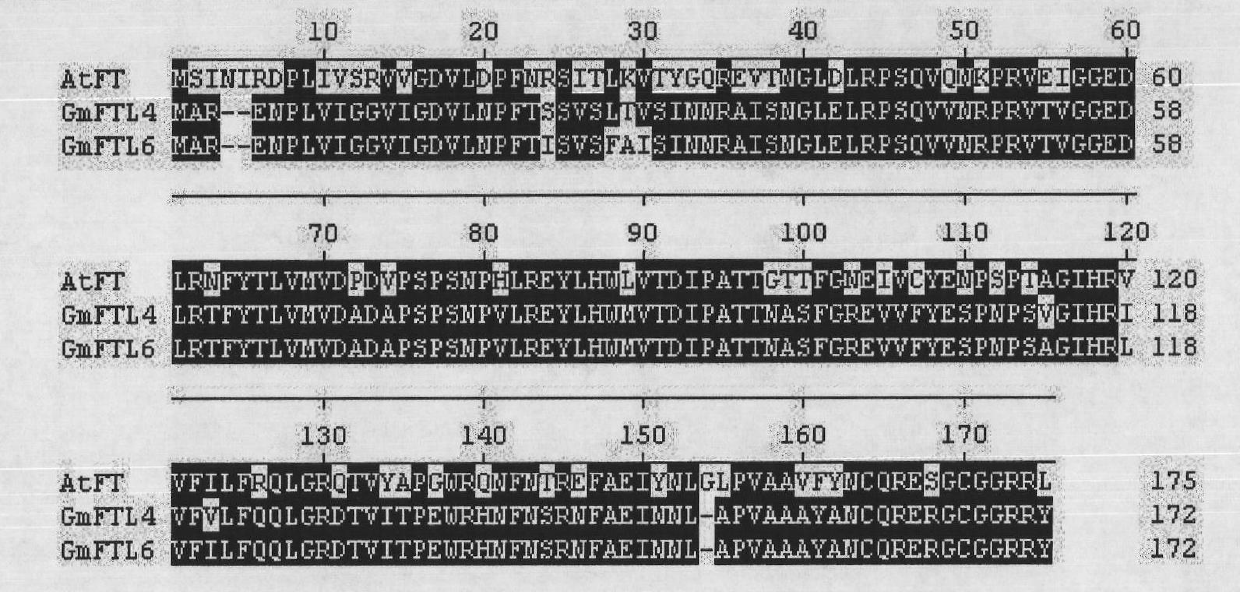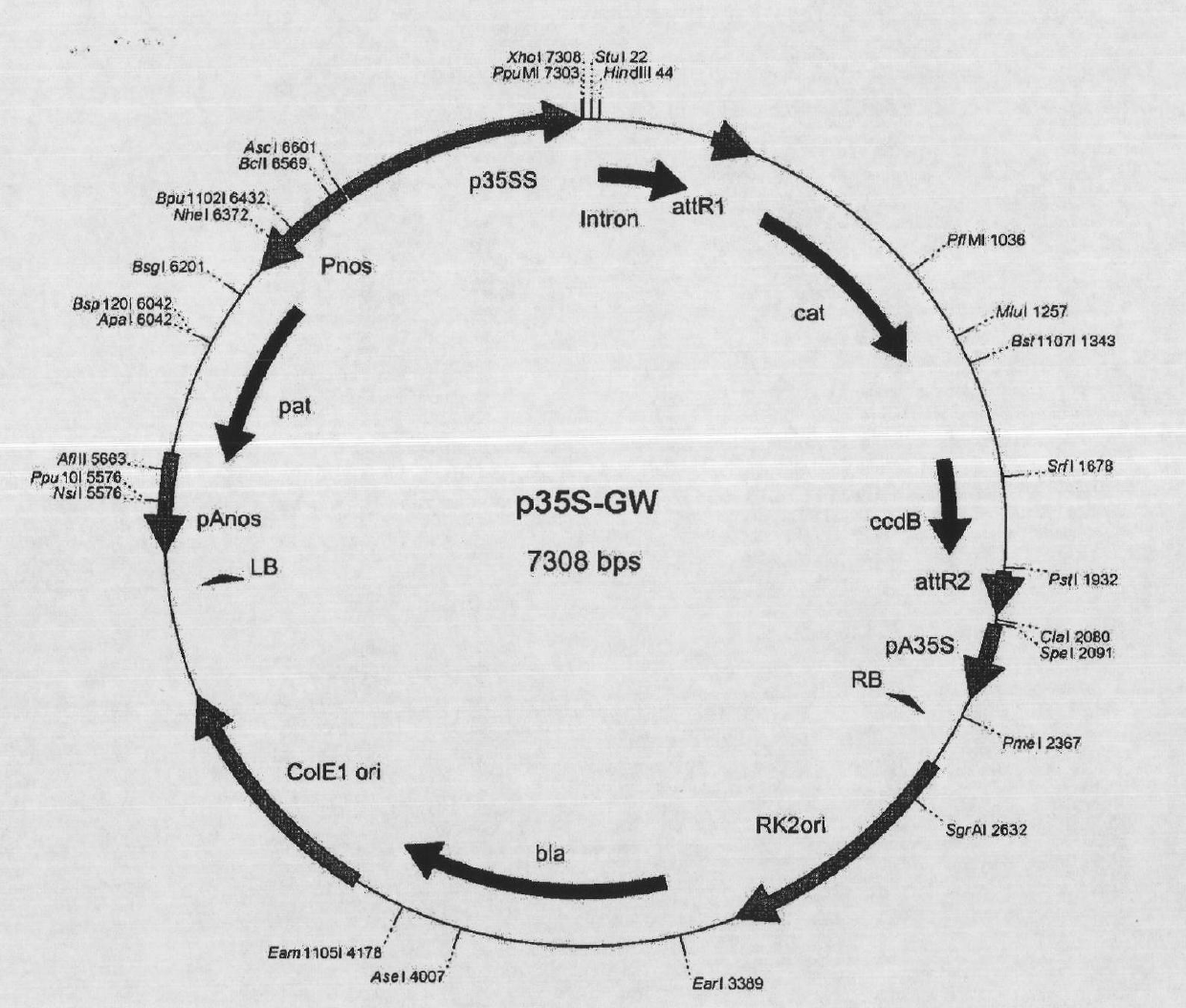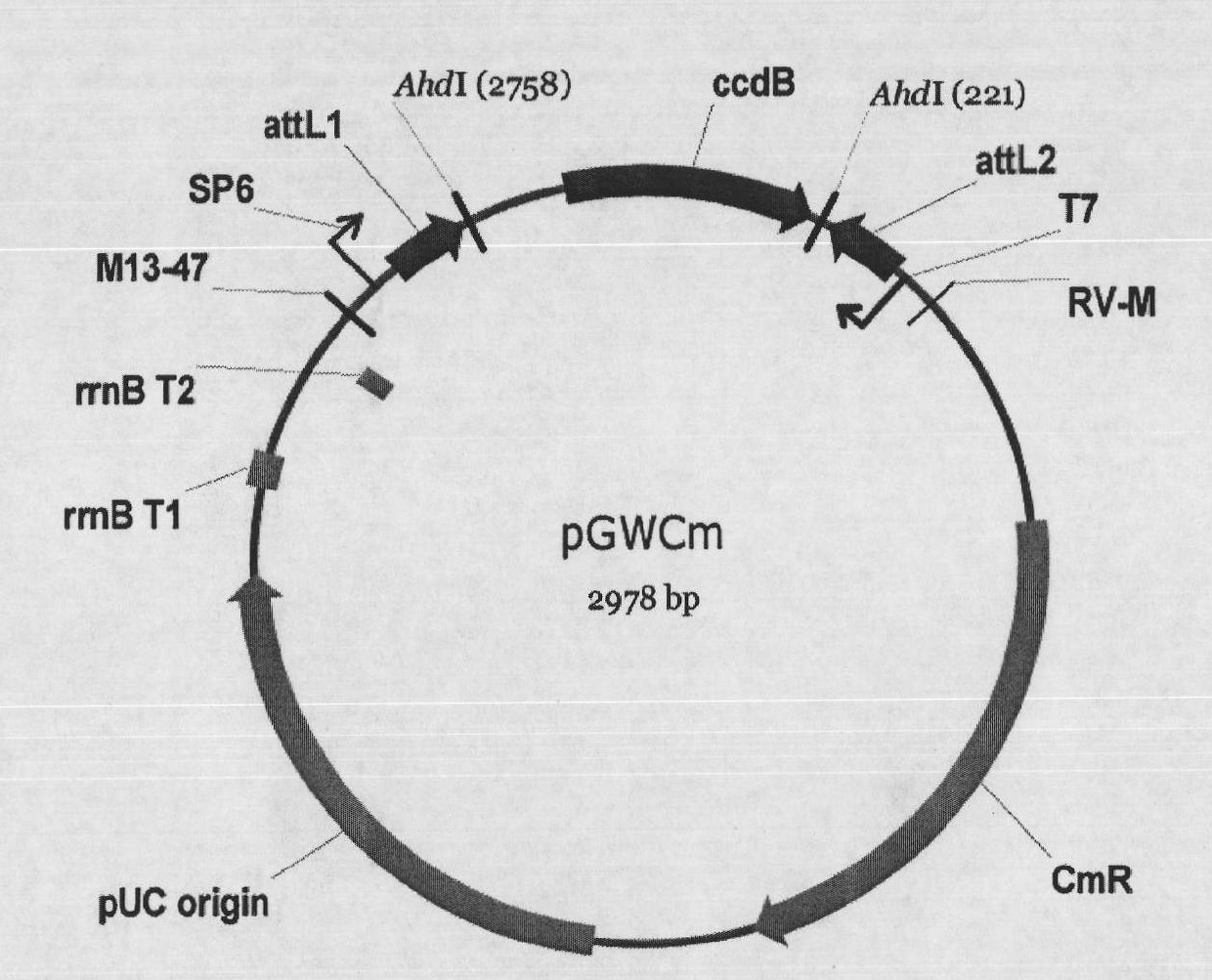Soybean GmFTL4 protein and GmFTL6 protein, and application thereof
A soybean, protein technology, applied in the field of genetic engineering, can solve problems such as changing plant sensitivity and flowering time
- Summary
- Abstract
- Description
- Claims
- Application Information
AI Technical Summary
Problems solved by technology
Method used
Image
Examples
Embodiment 1
[0027] Example 1 Cloning of soybean flowering genes GmFTL4 and GmFTL6
[0028] Using forward primer 5'-ATGGCACGGGAGAACCCCTCT-3' and reverse primer 5'-TTAATATCTCCTTCCACCGCAAC-3' and forward primer 5'-AACACAAACAATATAGTATCTAACA-3' and reverse primer 5'-AAAAAATCTTCATTGAACTTG-3' from soybean Kennong 18 (Glycine max L.Kennong 18) was cloned and sequenced to obtain GmFTL4 and GmFTL6 genes, the gene sequences of which are shown in SEQ ID NO.3 and SEQ ID NO.4; the amino acid sequences of proteins encoded by them are shown in SEQ ID NO.1 and Shown in SEQ ID NO.2.
[0029] The PCR reaction program was: 95°C for 5min pre-denaturation, 95°C for 30S, 45°C for 35S, 72°C for 1min, 25 cycles, and 72°C for 10min extension.
Embodiment 2
[0030] Example 2 Amino Acid Sequence Analysis of Proteins Encoded by Soybean Flowering Genes GmFTL4 and GmFTL6
[0031] The homology between the GmFTL4 and GmFTL6 protein sequences of the soybean flowering gene is greater than 96.5%, and the C-terminal functional domain has a high similarity with Arabidopsis, but there are important differences, such as figure 1 shown. The 131st amino acid residue of soybean GmFTL4 and GmFTL6 protein is aspartic acid (D), the 134th amino acid residue is isoleucine (I), and the 135th amino acid residue is threonine (T). The 137th amino acid residue glutamic acid is (E), the 140th amino acid residue is histidine (H), the 151st amino acid residue asparagine is (N), and the corresponding parts of Arabidopsis are Glutamine (Q), Tyrosine (Y), Alanine (A), Glycine (G), Glutamine (Q) and Tyrosine (Y). These differences lead to weaker activities of GmFTL4 and GmFTL6 than Arabidopsis FT.
Embodiment 3
[0032] The cloning vector of embodiment 3 soybean flowering genes GmFTL4 and GmFTL6
[0033]The PCR product that amplifies and obtains from embodiment 1 is cloned directly according to the TA cloning method image 3 on the indicated pGWCm vector. Firstly, the pGWCm vector was hydrolyzed with Ahd I endonuclease, and then the digested product was recovered with a gel recovery kit to obtain the T vector. Then the PCR product and the T vector were ligated at 16° C., the ligated product was transformed into Escherichia coli DH5α, amplified therein, positive clones were screened and sequenced.
PUM
| Property | Measurement | Unit |
|---|---|---|
| Upstream primer | aaaaa | aaaaa |
Abstract
Description
Claims
Application Information
 Login to View More
Login to View More - Generate Ideas
- Intellectual Property
- Life Sciences
- Materials
- Tech Scout
- Unparalleled Data Quality
- Higher Quality Content
- 60% Fewer Hallucinations
Browse by: Latest US Patents, China's latest patents, Technical Efficacy Thesaurus, Application Domain, Technology Topic, Popular Technical Reports.
© 2025 PatSnap. All rights reserved.Legal|Privacy policy|Modern Slavery Act Transparency Statement|Sitemap|About US| Contact US: help@patsnap.com



